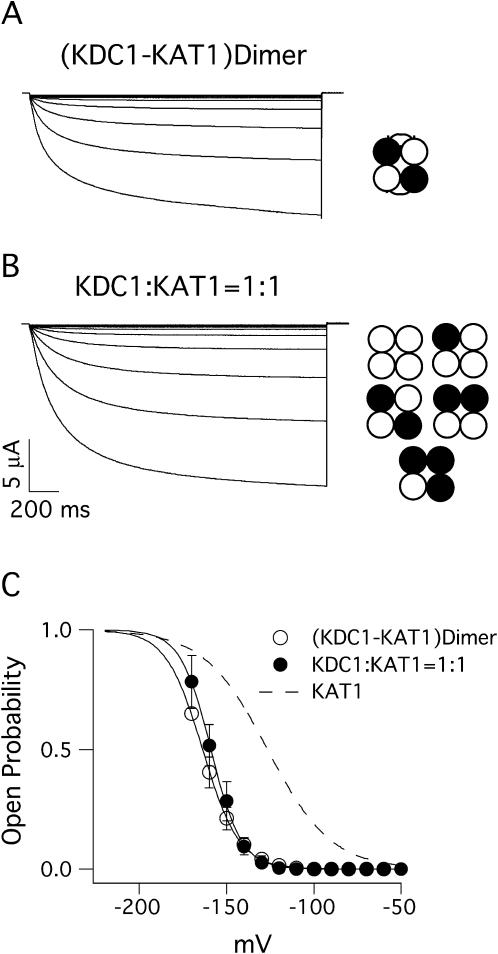FIGURE 2.
Functional expression of KDC1-KAT1 heterodimers and KDC1:KAT1 coexpressed channels. Ionic currents elicited by voltage steps from −50 to −170 mV in −10-mV increments from an holding potential of 0 mV in oocytes injected with (A) KDC1-KAT1 dimers and (B) coinjected with KDC1 and KAT1 at 1:1 weight ratio. In the model representation, each subunit is represented by a circle and the linker domain is represented by an arc. Dark subunits represent KDC1; white subunits represent KAT1. In B, the structure comprising four KDC1 subunits is omitted as this channel either is not expressed or does not carry potassium currents. We assume that in both cases (heteromeric or dimeric complexes) the channel comprises four subunits. (C) Typical open-probability characteristics of the dimer and coinjected channels. Data represent mean ± SE of the normalized steady state obtained from families of ionic currents like those in A and B plotted as a function of the applied potential. Continuous curves are the best fit of the open probability. They gave the following values for the half-activation potentials, V1/2 and the apparent gating valence, z (n = number of experiments): (KDC1-KAT1) dimer (V1/2 = −163 mV, z = 2.4, n = 3), KDC1:KAT1 channel (V1/2 = −159 mV, z = 2.9, n = 5). The dashed line represents the open probability of KAT1 channel. Standard ionic solution, pH 5.6.

